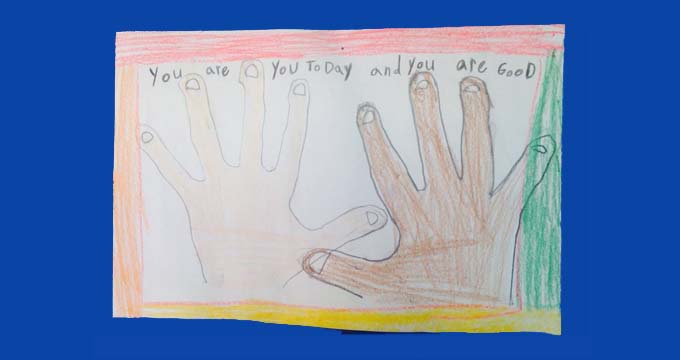No Art Left Behind: Introducing a New Series

By Susan Dufresne and Anthony Cody.
In the past 13 years of No Child Left Behind and Race to the Top test-driven education policies, art has been pushed to the margins in our schools. Students have lost countless hours for creating art, music and dance that expresses themselves. But artistic expression is like the seedling that forces its way through cracks in the asphalt. This blog series will explore how students and teachers use art to express themselves.
The series was inspired by a Facebook post authored by artist and kindergarten teacher Susan DuFresne. She wrote:
Art is healing and meditative for children and teachers. It is inspiring and allows a different kind of space for free and creative expression. Art builds self-confidence in a way that children need. It develops listening skills and an ability to work from part-to-whole. It develops trust in one’s teacher.Art develops executive functioning skills, impulse control, delayed gratification skills, planning and organizing skills, fine motor skills, and visual spatial skills. Art develops meta-cognition skills, problem-solving and critical thinking skills. Art increases experiences of joy in all children and during the process of a shared joyful Art experience, our immune systems get the same kind of boost as a hug provides. Shared Art experience creates a strong sense of community. Art creates a sense of peace and satisfaction. Art creates children who think outside the box and can help students stand up for themselves and others. Art develops empathy. Art helps us learn about our world sometimes in a way nothing else could replace. Art can be full-on play! Art can create wonder and Art can answer wonderings. Art can be fiction or non-fiction. Art can come from within or from a power outside of oneself. #Art can incite emotion. Art can be visual music with rhythm and a melody of pattern. Art can engage all of our senses. Art can be science. Art is math. Art is visual poetry. Art can be social studies. Art can incite social justice! Art can beNo Art Left Behind: Introducing a New Series - Living in Dialogue:

This is the first in a series of blog posts focused on the value of art in our lives, and the role art can play in resisting the test and punish model of education. See the intro and links to other posts in the series here.
By Sarah Puglisi.
When I was in training, in university, my Art Education teacher Bill Thomas once said something to the effect that if we can connect the home, and world in that home of the student, to our projects in an art room-if we can glimpse who the student is-then our lesson design was doing something profound.
He was teaching how to design starting points for children’s work as an art educator. Something we needed fieldwork to experience and understand but those days were in front of us. And indeed over my many years working as teacher and artist, art teacher, I saw the bridge, but rarely.
He understood the elusive edge. To connect to who that child is, that was his point.
One time I glimpsed it. I had set up an “Olympics” for a wild two classes- days and days of events that I ran Sarah Puglisi: Art is Happening
Michelle Gunderson: Poetry as Subversive Activity

This is the second in a series of blog posts focused on the value of art in our lives, and the role art can play in resisting the test and punish model of education. See the intro and links to other posts in the series here.
By Michelle Gunderson.
My first grade class was sitting in front of me gathered at our reading rug, and I asked them, “Could you write a poem about something important?” One of my students said, “Heck, yeah.” And off they went, paper in hand, to their tables – each child hunched over their paper scratching away words that were coming straight from the heart.
I did not teach the most extraordinary poetry unit. It was fairly simple, in fact. We read tons of poems, made lists of what we noticed, tried different techniques, and learned the mechanics of poetry. But at the end of the unit we read Whitman, Hughes, Dickinson, and Rosetti. We decided to add to our list of poetry features that poems can be about something important.
Writing a poem when you are six, and experiencing yourself as a poet is extraordinary.
Poetry is the natural language of childhood – we hear it in nursery rhymes, playground game, and jump rope Michelle Gunderson: Poetry as Subversive Activity
